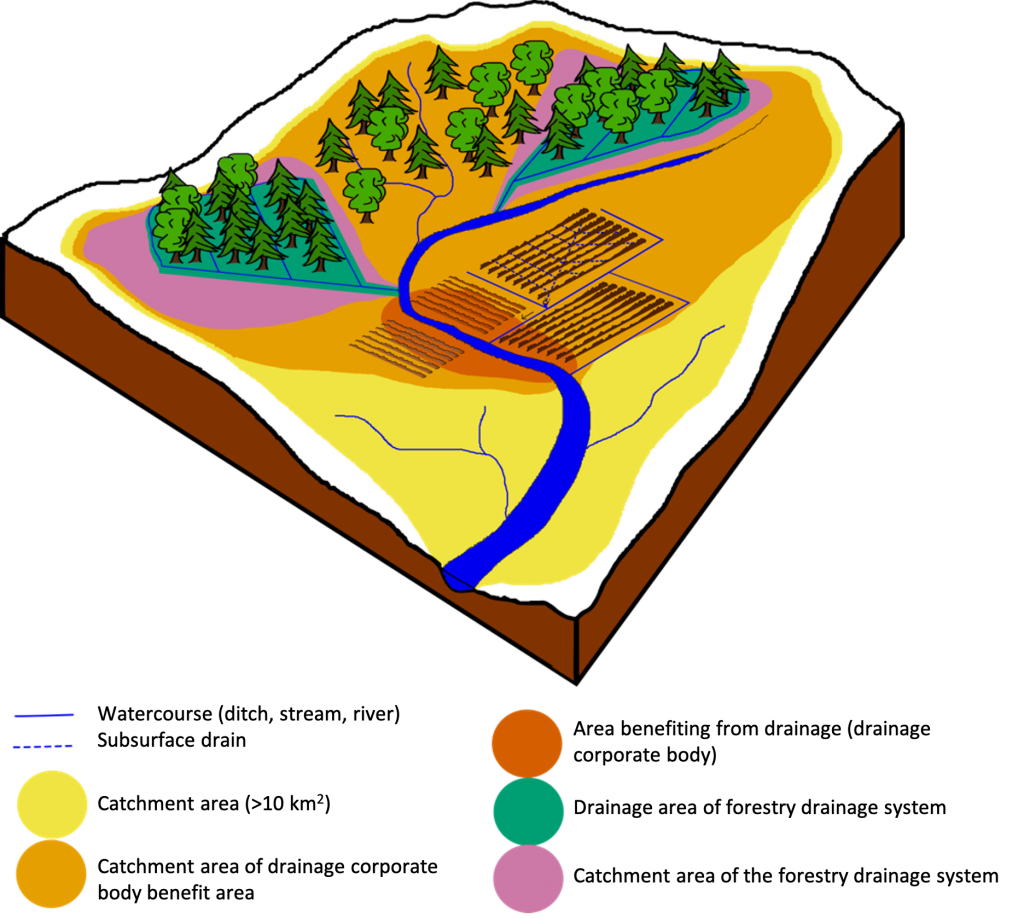Strategic guidelines for water resource management in agriculture and forestry in Finland
Strategic guidelines for water resource management in agriculture and forestry in Finland

During the last year, a working group consisting of members from the Ministry of Agriculture and Forestry, the Finnish Field Drainage Association and Tapio Oy has prepared a strategic document concerning water resource management (WRM) in agriculture and forestry. Tapio Oy, suitably named after the god of the forest in Finnish mythology, is a leading advisory and consult organization in the field of forest management. The objective of the strategic document is to set guidelines for the continuous development of WRM in agriculture and forestry taking into account the production as well as growing challenges, such as water protection, biodiversity, and adaption to and mitigation of climate change. The Waterdrive project and the guidelines deal with many similar issues and have influenced each other over the last year. The strategic document will be published in April 2020.
The need for new and updated guidelines has become apparent during the last few years, as weather conditions have been varying and challenging from a WRM viewpoint, reminding us of the importance of sustainable water management. The ever-changing operational environment and the multiple objectives of agriculture and forestry further asserts challenges for the WRM. Two remarkable changes in the operational environment are climate change as well as the role of the government in WRM, which has diminished significantly over the last decades, leaving more of upkeep responsibility to private landowners. At the same time, the objectives of agriculture and forestry has expanded to more widely include environmental objectives, many of which have a strong linkage to WRM, such as water quality, biodiversity, carbon sequestration.
The WRM infrastructure in agricultural and forestry areas in Finland is vast and consist mainly of land drainage. Around 5 million hectares of forested areas are drained through open ditches, while approximately 85 % of all the agricultural field area (2 million hectares) is drained either by subsurface drainage or open ditches. It has been estimated that there is around 1.5 million kilometers of open ditches in forested areas and close to 1 million kilometers of subsurface drains in agricultural areas. This drainage infrastructure that largely enables forestry and agriculture in Finland on its current scale was mainly built during the time period 1950–1980. Its current condition is not comprehensively known and would need to be mapped in order to coordinate and prioritize WRM measures in agricultural and forestry areas.
The strategy suggests measures that would promote a more multi-sectoral model for how the agriculture and forestry WRM could be planned and implemented on a catchment scale. This would enable a more co-operational response to meet the multiple objectives of a certain area, benefiting production as well as promoting environmental aspects and flood risk management. One important aspect is the involving of stakeholders in the planning and implementation at an early stage, which motivates and encourages to long-term commitments and upkeep of implemented measures. Another important step towards this is the unification of the WRM practices and policies of the agriculture and forestry sector, as they are clearly separated on many levels. The strategic document further suggests measures concerning water administration, subsidies, planning, research, advisory services, education and digitalization.
Figure 1 – Any chosen catchment area can include many different WRM and water protection projects on both agricultural and forestry areas. Projects should be planned and coordinated as a part of the larger catchment area in order to achieve the best results concerning production as well as environmental aspects.
Olle Häggblom & Helena Äijö, Finnish Field Drainage Association


